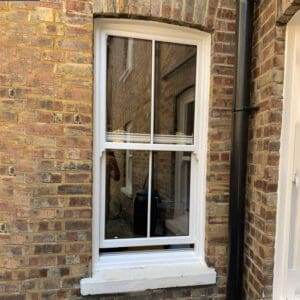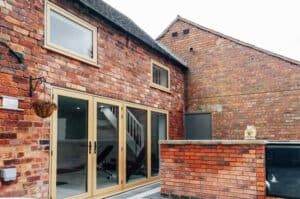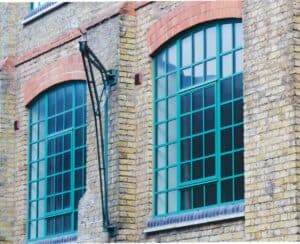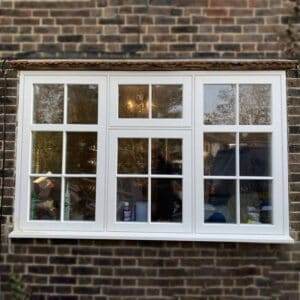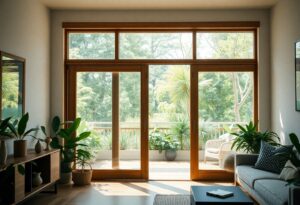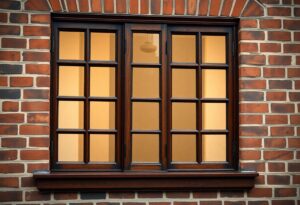Just as you contemplate the windows for your home, it’s imperative to find a balance between aesthetic appeal and energy efficiency. Classic windows offer timeless charm but often lack in modern insulation standards, while contemporary styles promise enhanced performance at the risk of compromising traditional beauty. By understanding these contrasts, you can make an informed decision that aligns with your personal style, enhances your property’s value, and optimises energy use, ensuring your choices serve both aesthetics and practicality in the long run.

Historical Overview
While window design has evolved significantly over the centuries, it reflects broader architectural trends and technological advancements. From *medieval stone windows* to *Victorian sash designs*, each era has contributed unique characteristics, revealing a tapestry of cultural influences and practical needs. The transition from these classic forms to contemporary styles mirrors advances in materials and building techniques, offering insights into how we live and interact with our spaces.
Evolution of Window Design
Historical records indicate that the design of windows has continually adapted, evolving from small openings in thick walls to large, glass-filled apertures. This change has been driven by a desire for more light and better ventilation, as well as advancements in materials, such as the introduction of glass production techniques in the medieval period. Each evolution not only reflects aesthetic preferences but also the technological capabilities of the time.
Classic Windows: Characteristics and Benefits
Between traditional styles and modern innovations, classic windows are defined by their *elegant proportions*, *ornate detailing*, and *robust construction*. These features not only provide a timeless aesthetic appeal but also enhance energy efficiency and improve acoustics in your home. Furthermore, classic windows often have historical significance, adding character and value to your property.
Even with the push towards modern designs, classic windows maintain their popularity due to their durability and low maintenance requirements. Their construction often includes materials like timber or lead, which offer longevity and effective insulation. You will find that they not only complement *historic buildings* but can also be tailored to fit contemporary architecture while adding a touch of elegance to your space. Opting for classic windows can also be a positive choice for the environment, as their craftsmanship promotes sustainability and reduces the need for frequent replacements.
Modern Innovations
Now, modern innovations in window design are transforming the way you experience your living spaces. With a plethora of Window Styles for Your Home: Enhancing the Look with …, these advancements seamlessly blend aesthetics with functionality, allowing you to enjoy both style and performance.
Technology in Window Design
Technology has revolutionised window design, offering features such as smart glass and automated shading systems. These innovations not only enhance the visual appeal of your windows but also increase their functionality, giving you greater control over light and insulation in your home.
Energy Efficiency and Sustainability
Against the backdrop of growing environmental concerns, energy efficiency and sustainability in windows have become paramount. The right choice of windows can significantly reduce your energy consumption and carbon footprint.
Due to advancements in materials and design, modern windows can effectively insulate your home, enhancing energy efficiency. By opting for triple-glazed glass and low-emissivity coatings, you’ll minimise heat loss and maintain a comfortable indoor temperature. Additionally, sustainable window options, such as those made from recycled materials, contribute to a healthier planet. Investing in energy-efficient windows not only benefits your wallet through lower energy bills but also creates a more environmentally friendly living space.
Aesthetic Considerations
Any homeowner understands the importance of aesthetics when choosing windows. The appearance of windows can dramatically influence the overall look of your home, enhancing or detracting from its character. You may want to explore The Aesthetic Appeal of Modern Replacement Windows to learn how modern styles can complement traditional architecture, creating a harmonious blend of beauty and functionality.
Design Trends in Classic vs. Modern Windows
Against the backdrop of contemporary design, classic windows often feature ornate detailing and craftsmanship, while modern windows lean towards minimalism and efficiency. This dichotomy reflects broader trends in architecture, where the beauty of simplicity is increasingly celebrated alongside the rich, intricate styles of the past.
The Role of Architecture in Window Aesthetics
One of the pivotal aspects of window aesthetics lies in its relationship with architectural styles. The design, shape, and placement of windows can significantly affect the visual harmony of a structure. Your home’s architectural style may dictate window size and design, ensuring that the windows enhance its beauty. For instance, large, expansive windows can modernise a building’s profile, whilst traditional sash windows evoke a sense of history and charm. Understanding this relationship can help you make informed decisions that align with your aesthetic goals.
Indeed, architecture plays a fundamental role in determining how windows influence a building’s overall aesthetic appeal. The materials and design choices you make can reflect the era and style you wish to convey. This interplay not only enhances visual interest but also contributes to the structural integrity of your property. By choosing windows that complement your home’s architecture, you ensure that each element works in unison, creating a seamless and appealing exterior. Optimal window selection harmonises form and function, resulting in a truly captivating environment.
Balancing Form and Function
All windows should reflect a balance between aesthetics and practicality. While traditional windows can enhance the charm of your home, modern designs focus on improved energy efficiency. You must consider not only the visual appeal they provide but also how they perform in terms of insulation, durability, and maintenance. Finding this equilibrium allows you to enjoy the beauty of classic styles while benefiting from the functionality of contemporary materials.
The Importance of Natural Light
Above all, natural light plays an important role in creating a welcoming and vibrant living space. It enhances your mood, improves productivity, and contributes to your overall well-being. When selecting windows, consider how they can maximise sunshine throughout the day, transforming dark areas into bright, inviting rooms. Ensuring that your window choices allow ample light will elevate both the ambiance and aesthetic of your home.
Practical Considerations for Choosing Windows
On your journey to select the perfect windows, various practical considerations must be addressed. You need to think about the material of the windows, such as wood or vinyl, along with their energy efficiency ratings and maintenance requirements. It’s wise to assess your local climate to determine which features will best protect your home while ensuring longevity. Additionally, you should weigh the cost of installation against the potential energy savings to make an informed decision.
At this stage, it’s important to assess your budget when contemplating new windows. Prioritise the energy efficiency ratings, as this can significantly impact your heating and cooling costs in the long run. Opting for materials that offer greater durability may seem like a larger initial investment but can save you money on repairs and replacements over time. Always consider whether the design aligns with your home’s aesthetics, as well as the local regulations that might dictate specific standards or styles to maintain cohesiveness within your neighbourhood. By attentively balancing these factors, you can achieve windows that are both visually appealing and functionally sound.

Case Studies
Not only do aesthetic considerations play a role in window selection, but efficiency and performance also demand attention. Below are several case studies illustrating the balance between classic and modern windows:
- Project A: Historic building restoration with double-glazed modern windows; energy savings increased by 30%.
- Project B: Contemporary home integrated with classic window designs; achieved aesthetic harmony while ensuring a low U-value.
- Project C: Urban flat renovation featuring energy-efficient windows; reduced noise pollution by 40%.
For more on window selection, visit What windows to choose for a residential home?.
Successful Integrations of Classic and Modern Windows
At the intersection of design, function, and tradition lies successful integration of classic and modern windows. Many projects have demonstrated that by carefully selecting window styles that complement each other, you can achieve a visually appealing and energy-efficient home. Incorporating traditional elements within contemporary frameworks results in stunning aesthetics without sacrificing performance.
Lessons Learned from Window Design Projects
At various window design projects, you will encounter insightful findings that shape future installations. These lessons emphasise the importance of understanding the interplay between aesthetics and utility, ensuring you assess both styles and materials thoroughly before committing to a design.
This process reinforces the notion that design choices significantly impact energy efficiency. For example, choosing the wrong frame material can lead to heat loss and unnecessary energy costs. You need to appreciate how glazing techniques vary in efficiency, as poorly selected windows can compromise your home’s comfort. As you contemplate your window choices, your decisions will not only define the look of your property but also your long-term savings and environmental footprint.
Expert Insights
Your choices in window design can significantly influence both the look and functionality of your space. Emphasising aesthetics while ensuring efficiency is a fine line to tread. Engaging with experts in the field can provide invaluable insights into finding that harmony, leading to windows that complement modern comforts without compromising on classic appeal.
Interviews with Architects and Designers
Above all, architects and designers emphasise that integrating classic design elements with modern efficiency is vital for successful window solutions. They often highlight innovative materials and techniques that retain traditional aesthetics while improving insulation and energy efficiency, ensuring you make a statement without compromising on performance.
Perspectives from Homeowners
Behind the façades of beautifully designed homes, homeowners often share their unique experiences with window choices that blend aesthetics and practicality. Personal testimonies reveal how striking the right balance can enhance not only your property’s value but also your overall satisfaction and comfort within your living spaces.
From various conversations with homeowners, the importance of choosing the right windows emerges as a key theme. Many share that their choices have positively impacted natural light and comfort levels, drastically reducing energy bills. Others caution against overlooking maintenance needs, as some materials may require more attention than anticipated. These shared experiences underline the need for careful consideration in balancing visually appealing designs with practical features in your window selections.
Summing up
To wrap up, finding the right balance between aesthetic appeal and efficiency in classic and modern windows is vital for your home. You must consider your personal style preferences as well as the practical benefits of energy efficiency, maintenance, and durability. By carefully assessing these factors, you can enhance your living space while ensuring it meets your functional needs, ultimately creating a harmonious environment that reflects your personality while being cost-effective in the long run.
FAQ
Q: What is the main difference between aesthetic and efficiency in windows?
A: The main difference lies in their focus; aesthetic refers to the visual appeal and design of windows, while efficiency pertains to their performance in terms of energy conservation, insulation, and functionality. Balancing these two aspects is vital for selecting windows that not only look good but also contribute positively to energy savings.
Q: How do classic windows compare to modern windows in terms of energy efficiency?
A: Classic windows, often made of wood with single glazing, may lack the insulation properties found in modern windows, which typically utilise double or triple glazing and energy-efficient materials. Modern windows generally provide better energy performance, reducing heating and cooling costs, whereas classic styles may require additional treatment to enhance efficiency.
Q: Can aesthetic windows still be energy-efficient?
A: Yes, it is possible to have aesthetically pleasing windows that are also energy-efficient. Innovations in window design allow for the creation of stylish windows that incorporate modern materials and technologies, such as low-emissivity (Low-E) glass, thermal breaks, and advanced framing systems, ensuring both beauty and functionality.
Q: What considerations should be made when choosing between classic and modern windows?
A: When choosing between classic and modern windows, consider factors such as the architectural style of your home, climate conditions, energy efficiency requirements, maintenance needs, and budget. It is important to assess how the chosen windows will integrate with the overall aesthetic while also meeting performance standards.
Q: Are there any regulations or standards to consider when installing new windows?
A: Yes, there are various building regulations and energy performance standards that must be adhered to when installing new windows. These may include guidelines on thermal performance, structural integrity, and safety features. It is advisable to check local regulations and consult with professionals to ensure compliance and optimal performance.

